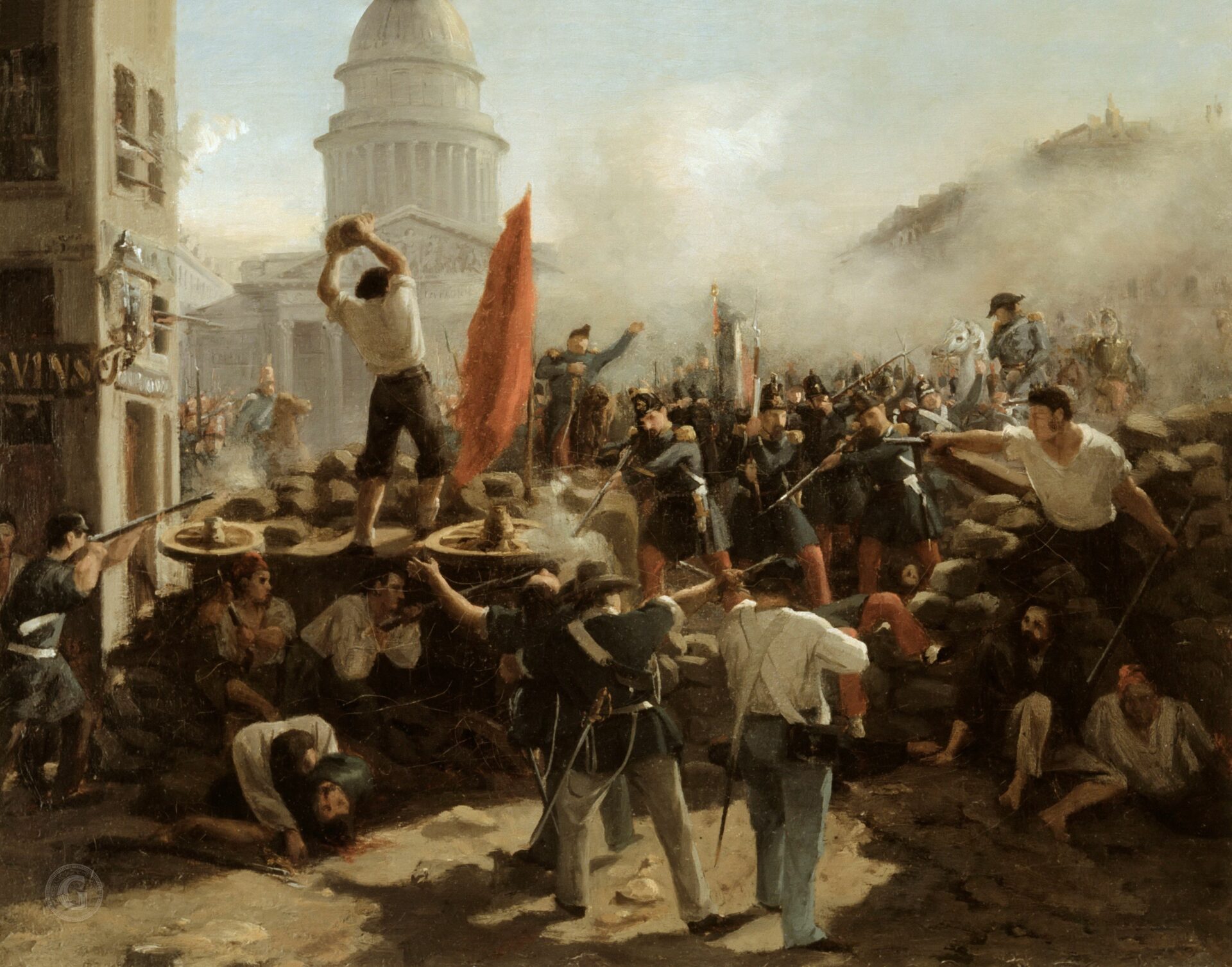In Italy new reform movements supplanted the discredited Carbonari. By the 1840s three movements were competing for the leadership of Italian nationalism. Two were moderate. One of these groups, based in the north, favored the domination of Piedmont; its leader, Count Camillo Cavour (1810-1861), was an admirer of British and French liberalism.
Cavour was the editor of an influential Turin newspaper, II Risorgimento (resurgence, regeneration), which gave its name to the movement for unification. The other moderate group called themselves Neo-Guelfs because, like the Guelf political faction of the Middle Ages, they hoped to engage the pope in the task of freeing Italy from the control of a German emperor. The Neo-Guelf leader, the priest Vincenzo Gioberti (1801-1852), declared that the future depended on “the union of Rome and Turin.” The pope would head, and the army of Piedmont would defend, a federation of Italian states, each with its own monarch and constitution.
The third group of liberals, Young Italy—so named because only those under the age of forty could join— asserted that Italy should be unified as a democratic republic. Its founder, Giuseppe Mazzini (1805-1872), hoped to create an organization more effective than the Carbonari, but was frustrated by prolonged exile and the ineptitude of his lieutenants. Nevertheless, Mazzini did win an enduring reputation as the great democratic idealist of modern Italian politics.
The prospects for reform in Italy brightened in 1846, when a new pope, Pio Nono (Pius IX, 1846-1878), was elected. His initial progressive actions, such as the release of political prisoners and steps to modernize the administration of the Papal States, aroused hopes for a liberalized papal government.
In January 1848 an uprising in Sicily, at first aimed at independence from Naples, forced King Ferdinand II to grant a constitution on the pattern of the French Charter of 1814 (as revised by the July Monarchy); in mid- February the grand duke of Tuscany was forced to follow suit. News of the rising in Paris quickened the pace of the Italian revolutions, as King Charles Albert of Piedmont (1798-1849) and Pius IX agreed to become constitutional rulers like Louis Philippe.
Next came Lombardy and Venetia, where the ideas of Young Italy had inspired revolutionary movements. Ever since January 1 citizens of Milan, the capital of Lombardy, had been boycotting cigars as a protest against the Austrian tax on tobacco. Severe rioting resulted. News of revolution in Vienna touched off five days of heavy fighting in Milan, which forced the Austrians to withdraw their forces. At the same time, Venice, the capital of Austria’s other Italian province, proclaimed itself the independent Republic of St. Mark.
This rapid collapse of Habsburg rule in Lombardy- Venetia inspired a national crusade against the Austrians. Charles Albert of Piedmont assumed command of the Italian forces, and refused an offer of help from the provisional government of the French republic. As town and country had opposing views and the Austrians exploited these divisions well, the decision to “go it alone” proved unwise.
Piedmont moved too far too fast, annexing Lombardy and the two small north Italian duchies of Parma and Modena. The other Italian states began to fear the imperialism of Piedmont more than they desired the unification of Italy. On April 29, Pius IX announced that his “equal affection” for all peoples obliged him to adopt a neutral position in the war with Austria and to recall his soldiers.
The pope could not act both as an Italian patriot and as an international spiritual leader. The Neo-Guelf cause thus received a fatal blow. In the Two Sicilies, the king scrapped the constitution and followed the papal example in withdrawing his troops from the war. The Austrians, taking the offensive, reconquered Lombardy and crushed the forces of Charles Albert at Custozza in July.
In Rome adherents of Young Italy rose up in November 1848. After Pius IX fled to Neapolitan territory, they transformed the Papal States into a democratic Roman Republic headed by Mazzini. In March 1849 radicals in Piedmont forced the reluctant Charles Albert to renew the war with Austria, but within the month Austria prevailed. In August 1849 the Austrians put an end to the Republic of St. Mark after a prolonged siege and bombardment of Venice. Meanwhile, Mazzini’s Roman Republic had surrendered to French troops sent by President Bonaparte in a bid for Catholic gratitude. Both the Neo-Guelfs and Young Italy were discredited.
Piedmont, however, had emerged as the leader of Italian nationalism and liberalism. It had defied the hated Austrians, and was also the only Italian state to retain the constitution granted in 1848. When Charles Albert abdicated, the crown passed to Victor Emmanuel II (1820-1878), who was to become the first king of modern Italy.

